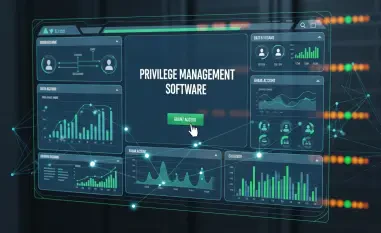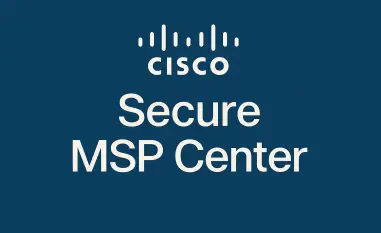Imagine a federal agency tasked with safeguarding critical national data, only to discover that its IT systems, built on decades-old infrastructure, are a patchwork of vulnerabilities waiting to be exploited. This scenario is not hypothetical but a stark reality for many government entities grappling with outdated technology in an era of escalating cyber threats, where the urgent need to modernize federal IT has never been clearer as agencies face mounting pressures to enhance security, improve efficiency, and meet stringent regulatory mandates. Software-as-a-Service (SaaS) emerges as a transformative solution, promising not only to address these challenges but also to embed zero-trust security principles at the core of operations, paving the way for a more resilient and agile future.
The State of Federal IT and the Need for Transformation
Federal IT systems, often characterized by fragmented and aging infrastructure, present significant hurdles in today’s fast-paced digital landscape. Many agencies rely on on-premises and custom-built solutions that have been pieced together over years, resulting in complex integrations that frequently fail during updates. These legacy systems are not only inefficient but also highly vulnerable to cyber threats due to their reliance on outdated security measures that struggle to keep pace with sophisticated attacks.
The inefficiencies of such systems extend beyond technical limitations, creating operational bottlenecks that hinder mission-critical activities. High maintenance costs and prolonged downtime during upgrades drain budgets and divert resources from strategic priorities. Modernizing these environments is no longer optional but a critical imperative to ensure both security and agility in delivering public services.
SaaS stands out as a pivotal enabler in this transformation journey, offering a unified platform that can streamline processes and bolster defenses. By shifting to cloud-based solutions, agencies can overcome the limitations of fragmented IT, reducing vulnerabilities and enhancing responsiveness. This approach positions SaaS as a cornerstone for rebuilding federal technology infrastructure to meet the demands of a rapidly evolving threat landscape.
SaaS as a Zero-Trust Security Solution
Embedding Zero-Trust Principles in Federal Operations
Zero-trust architecture, built on the mantra of “never trust, always verify,” has become a fundamental framework for securing federal IT environments. This model assumes no user or device is inherently trustworthy, requiring continuous validation of access at every level. SaaS platforms align seamlessly with this principle by offering robust, role-based access controls that dynamically adjust permissions based on an employee’s specific position within an agency.
Such granular control significantly mitigates risks associated with over-privileged accounts, a common entry point for cyber incidents. By ensuring that access is strictly tied to job functions, SaaS reduces the potential for insider threats, whether malicious or accidental. This embedded security approach contrasts sharply with the retrofitted measures of legacy systems, providing a proactive defense mechanism tailored to federal needs.
Additionally, SaaS solutions facilitate real-time monitoring and identity verification, further reinforcing zero-trust tenets. Agencies can track user behavior and detect anomalies instantly, enabling swift responses to potential breaches. This capability transforms security from a reactive afterthought into a core operational pillar, ensuring federal data remains protected against evolving dangers.
Operational and Financial Advantages of SaaS
Beyond enhancing security, SaaS delivers substantial operational benefits that reshape how agencies manage IT resources. By offloading responsibilities such as hosting, maintenance, and updates to vendors, federal IT staff can redirect their focus toward mission-critical initiatives rather than routine system upkeep. This shift optimizes workforce allocation and accelerates project timelines.
Financially, SaaS transitions agencies from a capital-intensive model to a more predictable operational-expense framework. This change eliminates the burden of redundant software licenses and expensive, disruptive upgrades that plague legacy systems. The subscription-based nature of SaaS allows for better budget forecasting and cost control, aligning expenditures with actual usage and needs.
Moreover, the automatic update feature of SaaS platforms ensures continuous innovation without the operational interruptions associated with traditional software overhauls. New features, security patches, and compliance adjustments are rolled out seamlessly, keeping agencies at the forefront of technology and regulatory standards. This adaptability not only saves resources but also empowers federal entities to remain agile in addressing emerging challenges.
Challenges in Adopting SaaS for Federal IT
The path to SaaS adoption in federal IT is not without obstacles, as agencies must navigate a complex landscape of technological and organizational barriers. Integrating cloud-based solutions with existing legacy systems often poses significant compatibility issues, requiring careful planning to avoid disruptions. These technical hurdles can delay implementation and demand specialized expertise that may not be readily available within current staff.
Cultural resistance to change further complicates the transition, as employees accustomed to traditional systems may be hesitant to embrace new workflows. This reluctance can slow down adoption rates and necessitate extensive training programs to build confidence in SaaS capabilities. Overcoming such resistance requires clear communication about the tangible benefits and long-term value of modernization.
To address these challenges, agencies can benefit from partnering with experienced vendors who bring proven implementation strategies and support. Leveraging a shared responsibility model, where vendors handle operational burdens while agencies maintain control over data, can ease the shift. Additionally, investing in change management initiatives and upskilling programs can help bridge staffing gaps and foster a smoother integration of SaaS into federal operations.
Navigating Federal Regulations and Zero-Trust Mandates
Federal agencies operate within a stringent regulatory environment that shapes the adoption of SaaS solutions, particularly in the context of zero-trust mandates. The White House has set critical deadlines for compliance with zero-trust architectures, emphasizing the urgency of transitioning to secure, modern IT frameworks. These mandates underscore the need for platforms that can meet rigorous security standards while supporting mission objectives.
Certifications such as FedRAMP-moderate play a vital role in ensuring SaaS solutions align with federal requirements. This accreditation verifies that platforms have undergone thorough security assessments, providing assurance to agencies about data protection and system reliability. Vendors achieving this certification demonstrate a commitment to supporting government needs through compliant and robust offerings.
Collaboration under the shared responsibility model further enhances regulatory alignment, as agencies retain oversight of sensitive data while vendors provide scalable infrastructure and expertise. This partnership enables faster deployment of compliant solutions and helps address resource constraints. By working together, both parties ensure that federal IT environments adhere to mandates while maintaining the highest standards of security and accountability.
The Future of Federal IT with SaaS Innovation
Looking ahead, SaaS is poised to redefine federal IT through continuous innovation and unparalleled scalability. Automatic updates ensure that agencies receive the latest features and security enhancements without the downtime or costs tied to manual upgrades. This capability keeps systems current and responsive to new threats and operational demands, fostering a culture of adaptability.
Emerging cyber threats remain a persistent challenge, but SaaS platforms are well-equipped to evolve alongside these risks. Their cloud-based nature allows for rapid deployment of countermeasures and patches, minimizing exposure to vulnerabilities. Additionally, the scalability of SaaS enables agencies to adjust resources dynamically, ensuring they can handle increased workloads or unexpected crises without overextending budgets.
Amid global and economic shifts, SaaS positions federal entities to meet future mission needs with fiscal responsibility. The flexibility to scale services up or down based on demand prevents wasteful spending while maintaining operational readiness. As technology advances, SaaS will likely integrate cutting-edge tools like artificial intelligence and machine learning, further enhancing decision-making and efficiency across government functions.
Conclusion
Reflecting on the comprehensive analysis, it becomes evident that federal IT has reached a critical juncture where clinging to legacy systems is no longer viable. The exploration of SaaS as a transformative force highlighted its capacity to embed zero-trust security, streamline operations, and reduce costs, offering a lifeline to agencies burdened by outdated infrastructure. Each challenge, from integration complexities to cultural resistance, was met with actionable strategies that paved the way for successful adoption.
Moving forward, federal leaders are encouraged to prioritize strategic partnerships with trusted SaaS vendors to accelerate the transition and maximize benefits. Investing in training and change management emerges as an essential step to build workforce readiness for cloud-based environments. By taking these proactive measures, agencies can not only safeguard critical data but also redirect resources toward innovation and mission success, ensuring a lasting impact on public service delivery.













